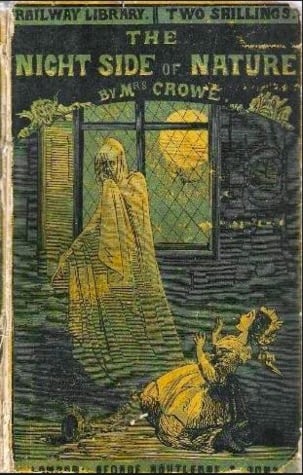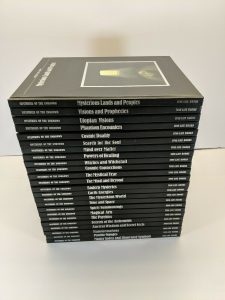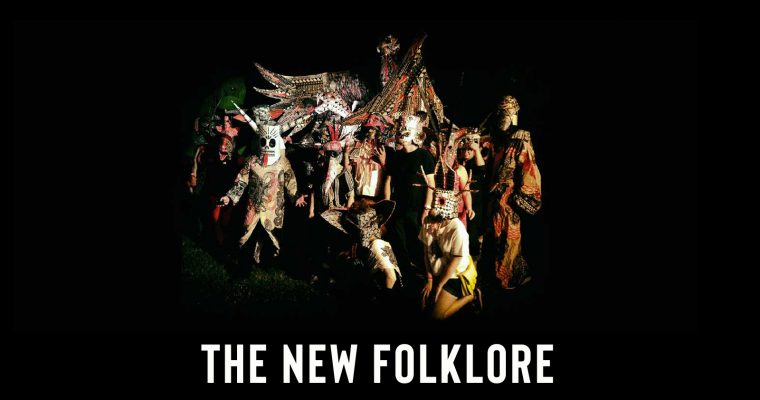In 1848, an English woman published a work that every ghost story, every horror movie, every Creepypasta that has come since owes a debt to. She was Catherine Crowe, and the book was The Night Side of Nature. There had been other collections of ghost stories that had come before, but Crowe’s approach was radically different, and her ideas laid the groundwork for the entire genre of what we now call The Supernatural.
At the the time of publication, Catherine Crowe was already a successful novelist, and had touched previously on supernatural themes in her work. But so had a substantial segment of writers working in the UK at the time. It was the mid 19th Century, and ghost stories were much in demand.
A trend for Gothic novels that started in the late 18th Century had grown into an entire wildly popular genre, and the many, many magazines published at the time filled their pages with tales of the haunted and the strange. Crowe was just one of many women writing these tories. Although biographical information about Crowe is depressingly scanty, but we know she began writing professionally in 1838 after separating from her husband. Writing was one of the few respectable career paths open to middle class women in 19th-Century British society.

But what Crowe offered in 1848 with The Night Side of Nature wasn’t just a collection of ghost stories. Its pages contained tories of ghosts, yes, but also stories of premonitions, of doppelgängers, of apparitions of people who were in fact miles away at the time, and other things outside the bounds of normality — a comprehensive, categorized guide to supernatural phenomena. This was also something that, for the English-speaking world, was entirely new.
Obviously, Crowe didn’t invent the concept of the ghost, the poltergeist, the apparition, or the doppelgänger. But what she did invent was the idea that all of these things belong together.
In the 170-odd years since The Night Side of Nature was published, we’ve grown very used to these sorts of collections. But in 1848, grouping these things together was a new concept. What Crowe invented was the modern sense of The Supernatural.
In 1848, “supernatural” was a technical term. It had been around for several centuries, but only in the rarefied airs of theological and philosophical debates. It was a word that was only just coming in to common use, to the extent that Crowe doesn’t assume a reader’s familiarity with it, taking the trouble to define it in the preface.
We are encompassed on all sides by wonders, and we can scarcely set our foot upon the ground, without trampling upon some marvellous production that our whole life and all our faculties would not suffice to comprehend. Familiarity, however, renders us insensible to the ordinary works of nature; we are apt to forget the miracles they comprise, and even, sometimes, mistaking words for conceptions, commit the error of thinking we understand their mystery. But there is one class of these wonders with which, from their comparatively rare occurrence, we do not become familiar; and these, according to the character of the mind to which they are presented, are frequently either denied as ridiculous and impossible, or received as evidences of supernatural interference—interruptions of those general laws by which God governs the universe; which latter mistake arises from our only seeing these facts without the links that connect them with the rest of nature, just as in the faint light of a starlit night we might distinguish the tall mountains that lift their crests high into the sky, though we could not discern the low chain of hills that united them with each other.
Interruptions of those general laws by which God governs the universe. The definition that Crowe is calling on here is one that was put forth by the 13th Century Christian philosopher Thomas Aquinas, and which was widely used by the early modern Church. Aquinas proposed a system for looking at miracles, dividing everything that could happen into three rough categories. There was the natural — things like the sun rising and setting and rain falling, the things that obeyed the rules of the universe as laid out by God. Then there was the supernatural, and this to Aquinas, meant genuine miracles. Things where God completely breaks the normal rules of the universe to make things happen. And these are always big things, like St. Winfred getting her head chopped off and then her sticking it back on again and keeping on preaching. The supernatural was things that were bound to attract some attention.
But between these two, Aquinas defined another category, the preternatural. The preternatural was a category of things that were above the normal course of nature, things which might be a bending of the rules of nature but not complete breaking. Things like the birth of conjoined twins, or the moon turning blood red. The sort of thing that God would do occasionally just to prove that he’s still around, but didn’t have anything particular to say.
When the Protestant reformation swept Europe, the category of the preternatural began to diminish. This tis partially due to new scientific apparatus and theories making is more things be considered natural, like when people beginning to notice comets returning on a predicable schedule, they stopped being regarded as preternatural omens. But it’s also due to things which had previously been only preternatural being shipped into the category of the supernatural.
In the fervor of the Protestant reformation, particularly in its more fervent, Puritan form in the 17th century, is a complete and utter conviction that the world will soon be ending. So, things like that blood red moon are no longer just strange — they’re outright miracles. It helps that you don’t have to waste time figuring out what God is trying to say to you, you already know — the world is about to end. That’s the one story that all of these miracles point to. The supernatural is all about big things, the biggest, from that Puritan perspective.
This fervor begins to die out by the 18th Century, and people begin to notice that the world isn’t ending quite as often as they’d been promised it would. Everyone’s also getting a little tired of the constant religious wars that have been raging across Europe for the past few centuries that have been used to pass the time while waiting for the world to end. Rationality becomes the hot new intellectual trend. And along with rationality comes science as the ultimate arbiter of truth.
For that truth, science demands evidence. If you want to know about the Supernatural, argue scripture all night long, if that’s what makes you happy. But if you want to know what’s going on in the world of the Natural, give me something to measure. Give me evidence.
This is the intellectual world in which Catherine Crowe is writing. One where the scientists are in charge of what is real and what isn’t. And what Crowe does is to take on the scientists on their own terms.
Crowe is out to prove the supernatural isn’t superstition, but something which is as yet unknown. Her method is to gather together anecdotes, legends, family stories, published and unpublished accounts of a wide variety of loosely related subjects. OK, Scientists, she says, You want evidence? Here’s some evidence.
The subjects I do intend to treat of are the various kinds of prophetic dreams, presentiments, second-sight, and apparitions; and, in short, all that class of phenomena which appears to throw some light on our physical nature, and on the probable state of the soul after death.
Crowe’s ultimate objective isn’t to prove the existence of ghosts. She’s looking for evidence of the “state of the soul after death.” Crowe is working from an essentially Christian view of the structure to the universe. What’s new here is that instead of going to scripture to prove her point, she goes to the external world. She’s taking the tools of understanding the Natural and applying them to the Supernatural.
This fight is not one that Crowe started on her own. There had, by her time, already been other volumes published which attempted to apply the rules of the Natural to the Supernatural. But all of these had been from a perspective of trying to disprove the existence of ghosts and other supernatural occurrences. And these explanations could ge pretty wild. In Scottish physician John Ferriar’s 1813 An Essay Towards a Theory of Apparitions, Ferriar sought to explain the appearance of ghosts through theories of “elastic fluid” and “a morbid disposition of the brain”, and other diagnoses which really must have made people wish they could have waited a few hundred years before seeing a doctor.
But Crowe stands up to this. Directly addressing Ferriar and similar works with The Night Side of Nature, she starts playing offense, demanding that the Supernatural be seen as a category of the Natural. And instead of gassing on about morbid brains, she offers up evidence. If one person sees a ghost, it may be a morbid brain. But what if two people see it? Or three? Or three hundred? Maybe ghosts are a thing after all.
Great as the difficulty is of producing evidence, it will, I think, be pretty generally admitted that, although each individual case, as it stands alone, may be comparatively valueless, the amount of recurrent cases forms a body of evidence that, on any other subject, would scarcely be rejected; and since, if the facts are accepted, they imperatively demand an explanation
But as we mentioned, Crowe doesn’t stop at ghosts. There are all kinds o strange phenomena recorded in the pages of The Night Side of Nature. Crowe is the first author in English to bind all of these disparate ideas together. There are certain things in the world that are unexplained – and the fact that they are unexplained is what binds them together. This is the idea that gives birth to the modern way of thinking of the Supernatural as a category. It’s opening a theoretical space where individuals and cultures can interact with religious, folkloric, and experiential traditions. Where there is room for inquiring about experiences which are unfriendly to empirical examination. It’s how ghosts, wraiths, apparitions, poltergeists, fairies, elves, goblins, angels, premonitions, telepathy, astrology, witchcraft, all the way to bigfoot, UFOs, and voodoo can all end up in the same Time-Life book series.

Crowe is reacting to the growing assertion of science as the ultimate arbiter of truth. But she’s reacting from within, putting forth a case for what she hopes will be a new scientific discipline. Because, in the context of her times, Crowe herself was a scientist.
Crowe was a student of phrenology, the discipline built around the idea that human personality traits express themselves in the shape of the skull and that the presence and strength of these traits can be determined through careful measurement. Today, phrenology is regraded as a pseudoscience — even used as a shorthand for completely absurd ideas — but in the 19th Century phrenology was taken seriously enough to be admissible in court. That this new discipline didn’t emerge, but instead transformed into something much more strange and creative, is Crowe’s great contribution to modern ideas of the Supernatural. Without Catherine Crowe, the ideas behind Ghostbusters would never have taken shape.
Of course, the shape is a complicated one. Crowe was a product of her time. And yes, measuring the shape of skulls was based very much on the premise that some people’s skull were more properly shaped than others. The 1830s were prime time for the canonization of scientific racism, and phrenology was very much part of that.
These prejudices are found explicitly in The Night Side of Nature, although Crowe seems to count the less-rationally shaped skulls of women and “child-like” races as a plus for spirit-seeing.
Thus the ecstatic woman will be more frequently a seer, instinctive and intuitive; man, a doer and a worker; and as all genius is a degree of ecstasy or clear-seeing, we perceive the reason wherefore in man it is more productive than in woman, and that our greatest poets and artists, in all kinds, are of the former sex, and even the most remarkable women produce but little in science or art; while on the other hand, the feminine instinct, and tact, and intuitive seeing of truth, are frequently more sure than the ripe and deliberate judgment of man; and it is hence that solitude and such conditions as develop the passive or receptive at the expense of the active, tend to produce this state, and to assimilate the man more to the nature of the woman; while in her they intensify these distinguishing characteristics; and this is also the reason that simple and child-like people and races are the most frequent subjects of these phenomena.
Crowe sought to create a new scientific discipline by applying the rules of the Natural to the Supernatural in an effort to prove the existence of multiple phenomena. But what she inadvertently created was the Supernatural as we know it today, as space where experience, culture, the literary, and the folkloric all play off each other in a constant search for meaning. It’s one hell of a box. But Crowe was shaped by her time and her culture, so was the the box she built. And nearly two centuries on, the Supernatural is still haunted by the shape of those origins.
